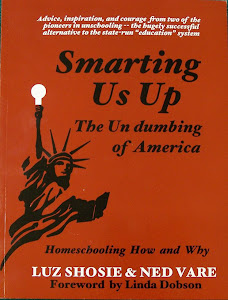Pamela LaRegina, a calligrapher www.supercalligraphics.com , says that her practice of calligraphy provides benefits for her life that are beyond financial, like teachers of dance and music who see their arts as providing character, confidence and joy. Some of her thoughts about her practice are as follows:
The capital I is drawn with a single vertical stroke. Graphically, it represents the "minimum" stroke in our writing system. This means that it carries a lot of responsibility. It is the stroke that is most repeated and therefore deserves to be treated with a lot of attention to detail. If you can imagine it as a "real" letter, that is, with its skin on, it has some messages to relay. It tells how thick and thin the quality of line should be, and where exactly those thick and thin places should occur. Then, when drawing the A, the B, the D, the E, the F, the beard on the G, the H, the J, the K, the L, the M, the N, the P, the R, the T, the U, the V and W, the X, the Y, and the Z, you know what the quality of their strokes will be also. Actually, the more you practice these graceful strokes, the more you can feel the rounded parts of the letters as being in harmony with the movements that it takes to create the capital I, also.
In order for all this to be understood, it really needs to be experienced. This is an idea that you have undoubtedly encountered in other activities, such as playing golf, or a musical instrument.
Of course it goes without saying that the height of the capital I is an indictor of the height the other letters. There are some slight exceptions to this. Although the A comes first, it is actually drawn slightly taller than the I to compensate for an optical principle. Because it comes to a point on top, it needs this extra height to appear the same height. The same alteration is necessary for other letters that have points on top or bottom, and the O, also, is a tad taller.
What is perhaps more important than the height is the quality of verticality and straightness that the I lends to the alphabet. It becomes a sensual experience that reaches down to your toes and inside to your deep-breath belly. A capital I that leans backwards even slightly is going to look like it is falling over. You get to see that you drew it incorrectly, however, and this gives you a chance to deal with your mistake.
This is the way to learn to do anything. The process of learning to draw a vertical stroke takes body awareness. My personal experience, though difficult to verbalize entirely, goes something like this:
Simply put, I become the letter. I must be sitting with a straight back to make the letter straight. I must use a movement that incorporates a relaxed, downward stroke that uses the whole arm. The pressure will vary according to the tool and the surface I am writing on, but generally speaking, it will be an even pressure that may ease up slightly in the middle of the stroke.
You must stay conscious of the whole process. This requires use of mind and body working together with no margin for drift. Thus, it becomes a kind of meditation. As the attention focuses, the letter becomes. There are other considerations, also. For example, as the letter must be placed somewhere, how and exactly where it gets placed must be deliberate. The space around the letter- the negative space, must be designed. Here is where a calligrapher has to make conscious choices based on his sense of space and balance. The space itself has a shape, and becoming aware of and orchestrating this space is part of the game.
When I stated that I become the letter, I was reiterating a dictum that I learned while taking a course in Chinese brush painting. The teacher told us that you have to become the flower or the bamboo.
Subscribe to:
Post Comments (Atom)


No comments:
Post a Comment